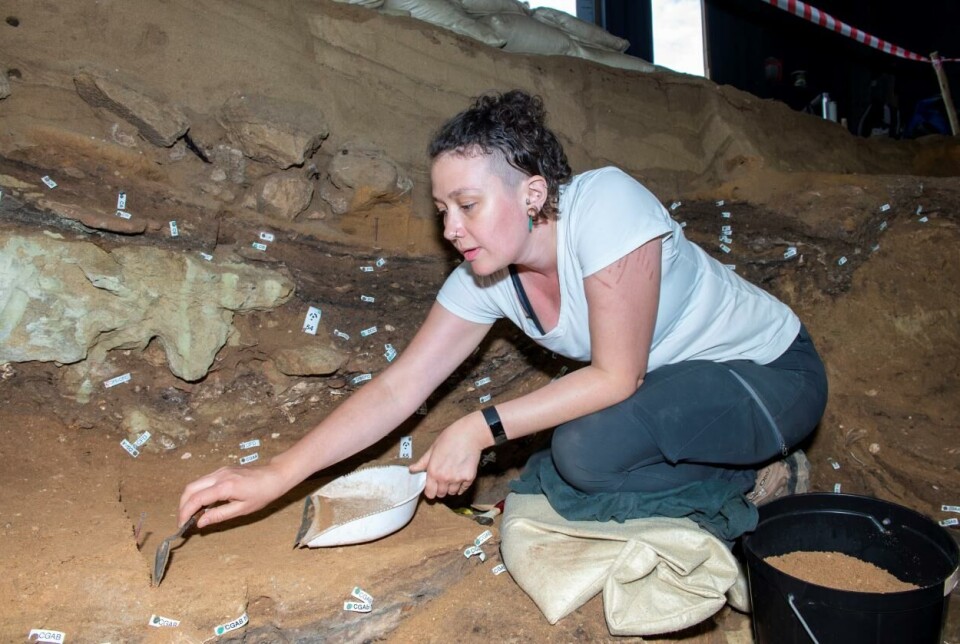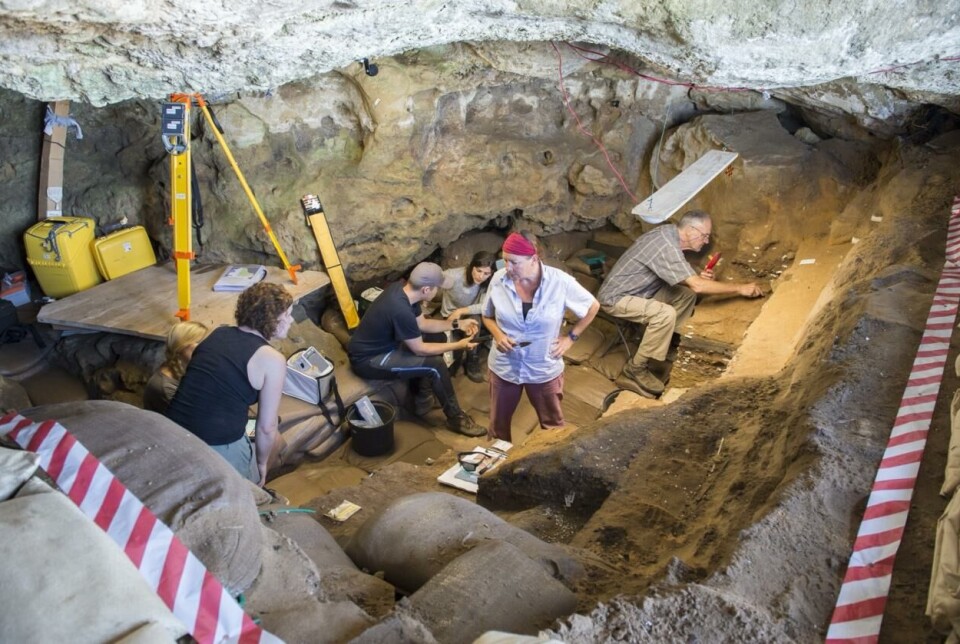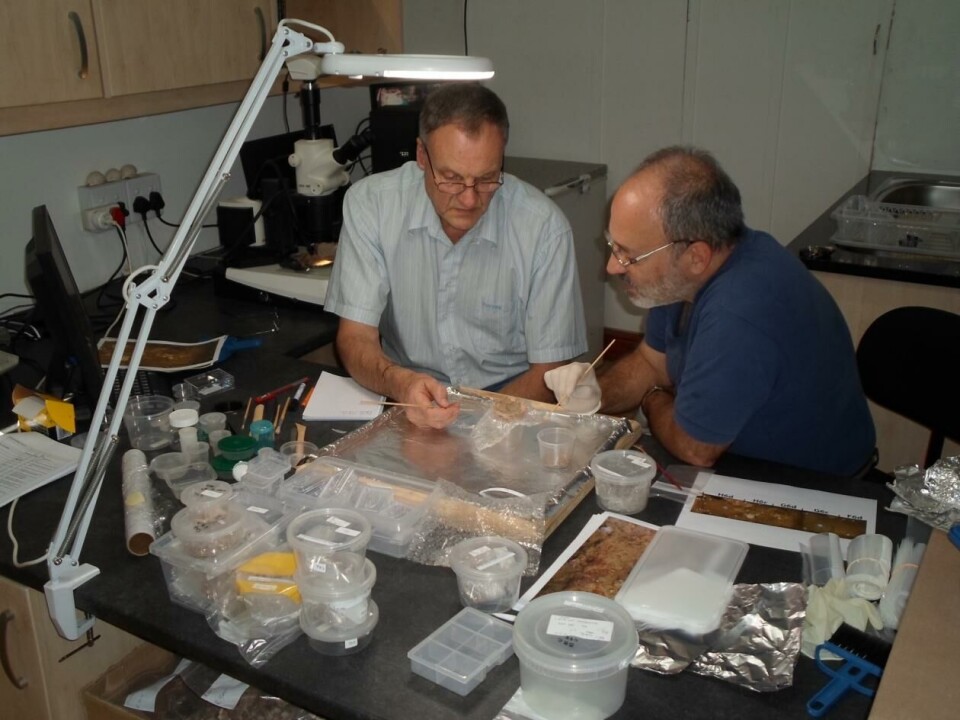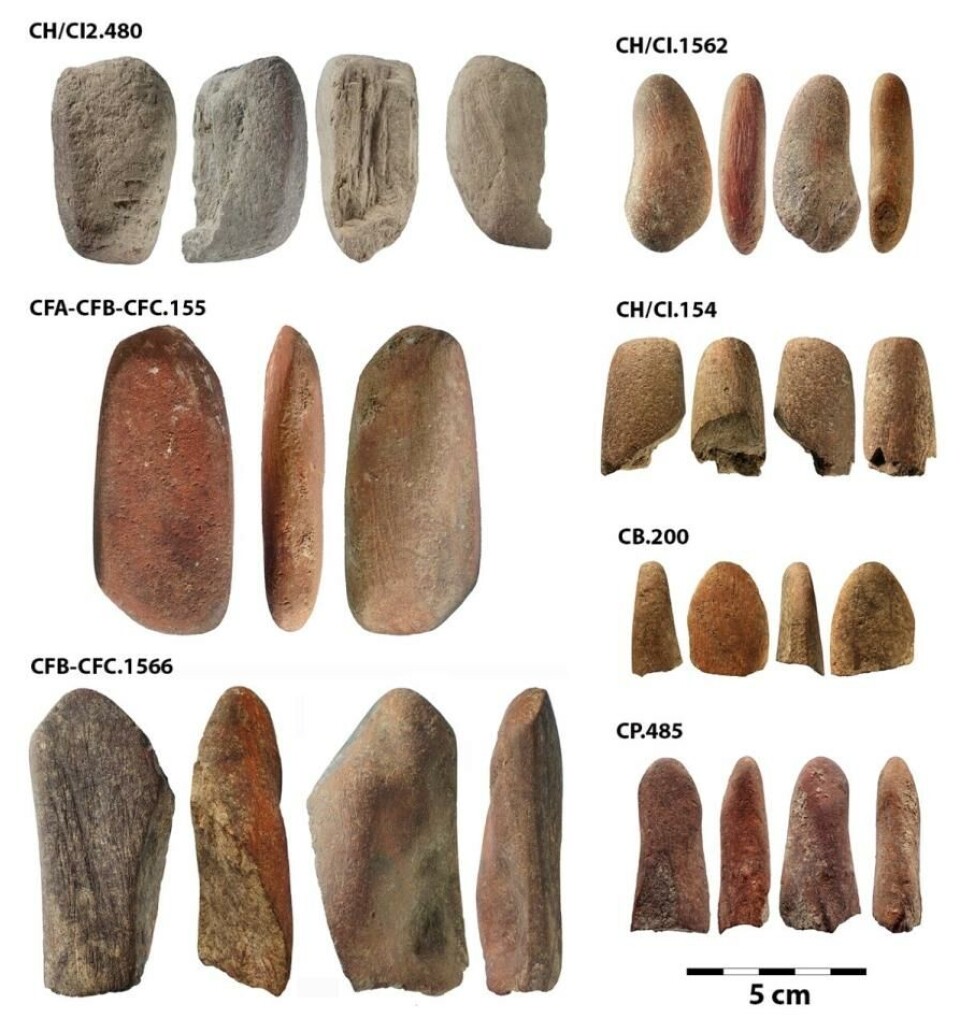THIS CONTENT IS BROUGHT TO YOU BY the University of Bergen - read more
Archaeologists found that early humans used ochre to make stone tools
A new study shows that early modern humans had advanced skills much earlier than once thought.

“We now know that ochre was a multi-use tool that played an essential role in the daily lives of early modern humans. I believe this discovery could change how we view ochre and the past, and deepen our understanding of early human behaviour,” says Elizabeth Velliky.
Velliky made this discovery – one that could change our understanding of early human history – while working in the Centre for Early Sapens Behaviour (SapienCE) lab in Cape Town with colleagues Francesco d’Errico, Karen van Niekerk, and Christopher Henshilwood.
Velliky was looking through artefacts from earlier excavations when she noticed a piece of ochre that stood out from the rest.
Its unique shape and wear patterns, which are marks left by human use, suggested it had been used for more than just making pigment powder.

She showed the piece to her colleagues. They agreed it was special.
At first, they thought that this single piece was the only one. But as they continued to examine more boxes of artefacts, they found more ochre pieces with similar features.
They realised they were looking at a new type of artefact, that up until now had only been speculated about. It marked the beginning of a new understanding of how ochre was used in the past.
Evidence of advanced toolmaking
In the study, the researchers examine seven ochre pieces found in the sediments in Blombos Cave, dating back 90,000 to 70,000 years.
Analyses by d’Errico and his team, along with experiments replicating the wear patterns on the toold, confirmed that these ochre pieces were used in shaping stone tools, known as knapping.
This marks the first direct evidence of ochre being used as a tool for retouching stone tools during the Middle Stone Age. It represents a major step in understanding early human technology and behaviour.
“We now know that these ochre pieces were not simply picked up and used. They were carefully modified to serve a specific technological purpose,” Velliky says.

Their shapes and wear patterns match those produced through both direct percussion and pressure flaking – a technique that requires fine motor skills and expert knowledge.
This technique helped remove small flakes from stone tools and was likely used to make the iconic Still Bay points: symmetrical, finely crafted tools seen as some of the most sophisticated stone artefacts from the African Middle Stone Age.
Skilled toolmakers and group identity
The consistent shapes and clear intention behind their design indicates that these were not just casual tools. They were likely personal items, possibly owned by skilled toolmakers.
“The sophistication of these pressure flakers implies that they were the personal property of expert toolmakers,” says d’Errico. “They may have functioned not only as practical instruments but also as indicators of identity and technical prowess.”
The discovery shows how complex the technology at Blombos Cave really was, and challenges the traditional interpretation that ochre was mainly used for symbolic purposes.
The study shows that ochre played a key role in early humans' toolmaking systems and may have helped shape personal or group identity.

“We now have evidence that ochre was not only a medium for symbolic expression but also a key material in specialised tool production, reflecting a level of technological sophistication previously associated with much later periods,” says Christopher Henshilwood, archaeologist and director of SapienCE.
A key to understanding behavioural modernity
The research team hopes this study will inspire new discussions on the many ways ochre was used, and how it was part of both the symbolic and technological spheres of early modern human behaviour.
“This discovery will add another layer to our understanding of the behavioural odernity of early Homo sapiens in southern Africa,” says Karen van Niekerk.
She is the deputy director of SapienCE, and director of the Blombos Cave excavations in recent years.
She hopes that future excavations and experiments will reveal even more about the many roles ochre played during the Middle Stone Age, and what that tells us about the lives of early modern humans.
Reference:
Velliky et al. Unveiling the multifunctional use of ochre in the Middle Stone Age: Specialized ochre retouchers from Blombos Cave, Science Advances, vol. 11, 2025. DOI: 10.1126/sciadv.ads2797

This content is paid for and presented by the University of Bergen
This content is created by the University of Bergen's communication staff, who use this platform to communicate science and share results from research with the public. The University of Bergen is one of more than 80 owners of ScienceNorway.no. Read more here.
More content from the University of Bergen:
-
The West influenced the Marshall Islands: "They ended up creating more inequality"
-
Banned gases reveal the age of water
-
Researchers discovered extreme hot springs under the Arctic
-
Tiny particles unlock vinegar’s hidden healing potential
-
“Why doesn't it rain more?” asks researcher
-
Uncovering the hidden female influence in medieval literature




































